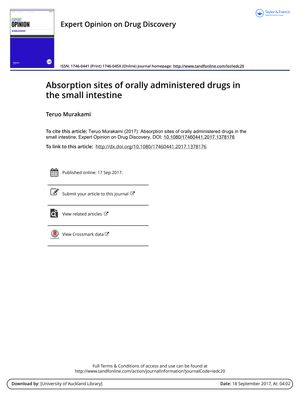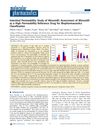Absorption Sites of Orally Administered Drugs in the Small Intestine
September 2017
in “
Expert Opinion on Drug Discovery
”

TLDR Different factors affect where drugs are absorbed in the small intestine, which is important for effective medication use.
The document provides a comprehensive analysis of the absorption sites for orally administered drugs in the small intestine, emphasizing the role of various factors such as solubility, lipophilicity, luminal concentration, pKa value, transporter substrate specificity, transporter expression, luminal fluid pH, gastrointestinal transit time, and intestinal metabolism. It discusses the sequential absorption of most drugs from the proximal small intestine, the impact of transporters like P-glycoprotein (P-gp), multidrug resistance-associated proteins (MRP2), and organic anion transporting polypeptides (OATP/oatp) on drug permeability, and the importance of drug solubility and stability for effective pharmacotherapy. The document also examines the influence of P-gp on the absorption of high solubility substrates and introduces the role of SLC or ABC transporter-mediated transports and intestinal metabolism into the Biopharmaceutics Classification System (BCS) classes. It highlights the complexity of intestinal permeability and the need for careful data interpretation in assigning BCS classification. The studies cited investigate a range of drugs, including metoprolol, minoxidil, nefazodone, nifedipine, oxprenolol, phenytoin, pseudoephedrine, and others, demonstrating the variability in absorption profiles along different intestinal regions. The document underscores the significance of understanding regional intestinal permeability and the potential for drug-drug interactions for the development of drug delivery systems and optimization of pharmacotherapies.

